#King George III - 1761
Explore tagged Tumblr posts
Photo
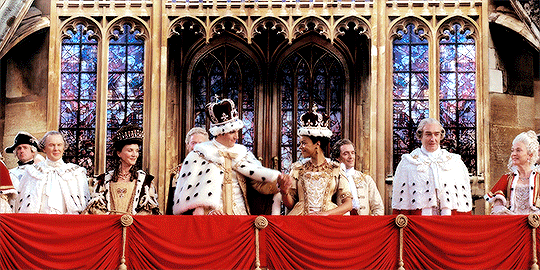
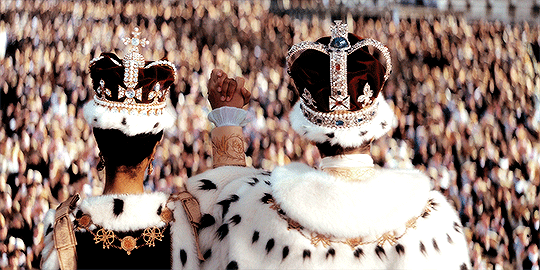
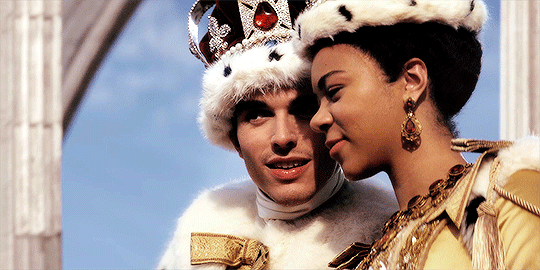

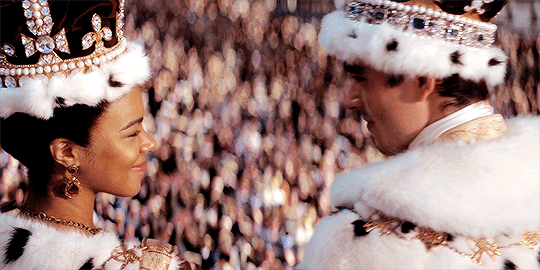

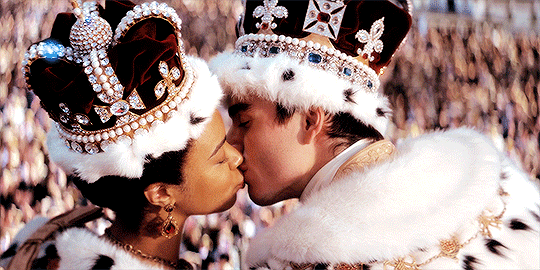
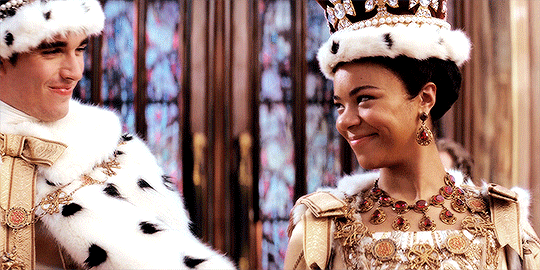
The coronation of George III and his wife Charlotte as King and Queen of Great Britain and Ireland took place at Westminster Abbey, London, on Tuesday, 22 September 1761.
#charlotte of mecklenburg strelitz#george iii#charlotte x george#bridgerton#bridgertonedit#qcabsedit#queen charlotte: a bridgerton story#tvgifs#perioddramaedit#periodedit#onlyperioddramas#useralison#userbennet#uservalentina#usergif#romancegifs#adaptationsdaily#creations
749 notes
·
View notes
Text

On this day in 1787, thirty-nine brave men signed the proposed U.S. Constitution, recognizing all who are born in the United States or by naturalization, have become citizens
+
LETTERS FROM AN AMERICAN
September 17, 2024
Heather Cox Richardson
Sep 18, 2024
In 1761, 55-year-old Benjamin Franklin attended the coronation of King George III and later wrote that he expected the young monarch’s reign would “be happy and truly glorious.” Fifteen years later, in 1776, he helped to draft and then signed the Declaration of Independence. An 81-year-old man in 1787, he urged his colleagues at the Constitutional Convention in Philadelphia to rally behind the new plan of government they had written.
“I confess that there are several parts of this constitution which I do not at present approve, but I am not sure I shall never approve them,” he said, “For having lived long, I have experienced many instances of being obliged by better information, or fuller consideration, to change opinions even on important subjects, which I once thought right, but found to be otherwise.”
The framers of the new constitution hoped it would fix the problems of the first attempt to create a new nation. During the Revolutionary War, the Second Continental Congress had hammered out a plan for a confederation of states, but with fears of government tyranny still uppermost in lawmakers’ minds, they centered power in the states rather than in a national government.
The result—the Articles of Confederation—was a “firm league of friendship” among the 13 new states, overseen by a congress of men chosen by the state legislatures and in which each state had one vote. The new pact gave the federal government few duties and even fewer ways to meet them. Indicating their inclinations, in the first substantive paragraph the authors of the agreement said: “Each state retains its sovereignty, freedom and independence, and every Power, Jurisdiction and right, which is not by this confederation expressly delegated to the United States, in Congress assembled.”
Within a decade, the states were refusing to contribute money to the new government and were starting to contemplate their own trade agreements with other countries. An economic recession in 1786 threatened farmers in western Massachusetts with the loss of their farms when the state government in the eastern part of the state refused relief; in turn, when farmers led by Revolutionary War captain Daniel Shays marched on Boston, propertied men were so terrified their own property would be seized that they raised their own army for protection.
The new system clearly could not protect property of either the poor or the rich and thus faced the threat of landless mobs. The nation seemed on the verge of tearing itself apart, and the new Americans were all too aware that both England and Spain were standing by, waiting to make the most of the opportunities such chaos would create.
And so, in 1786, leaders called for a reworking of the new government centered not on the states, but on the people of the nation represented by a national government. The document began, “We the People of the United States, in order to form a more perfect Union….”
The Constitution established a representative democracy, a republic, in which three branches of government would balance each other to prevent the rise of a tyrant. Congress would write all “necessary and proper” laws, levy taxes, borrow money, pay the nation’s debts, establish a postal service, establish courts, declare war, support an army and navy, organize and call forth “the militia to execute the Laws of the Union” and “provide for the common Defence and general Welfare of the United States.”
The president would execute the laws, but if Congress overstepped, the president could veto proposed legislation. In turn, Congress could override a presidential veto. Congress could declare war, but the president was the commander in chief of the army and had the power to make treaties with foreign powers. It was all quite an elegant system of paths and tripwires, really.
A judicial branch would settle disputes between inhabitants of the different states and guarantee every defendant a right to a jury trial.
In this system, the new national government was uppermost. The Constitution provided that “[t]he Citizens of each State shall be entitled to all Privileges and Immunities of Citizens in the several States,” and promised that “the United States shall guarantee to every State in this Union a Republican Form of Government, and shall protect each of them against Invasion….”
Finally, it declared: “This Constitution, and the Laws of the United States which shall be made in Pursuance thereof; and all Treaties made, or which shall be made, under the Authority of the United States, shall be the supreme Law of the Land; and the Judges in every State shall be bound thereby, any Thing in the Constitution or Laws of any State to the Contrary notwithstanding.”
“I agree to this Constitution with all its faults, if they are such,” Franklin said after a weary four months spent hashing it out, “because I think a general Government necessary for us,” and, he said, it “astonishes me…to find this system approaching so near to perfection as it does; and I think it will astonish our enemies, who are waiting with confidence to hear that our…States are on the point of separation, only to meet hereafter for the purpose of cutting one another’s throats.”
“On the whole,” he said to his colleagues, “I can not help expressing a wish that every member of the Convention who may still have objections to it, would with me, on this occasion doubt a little of his own infallibility—and to make manifest our unanimity, put his name to this instrument.”
On September 17, 1787, they did.
LETTERS FROM AN AMERICAN
HEATHER COX RICHARDSON
#U.S.Constitution#Letters From An American#Heather Cox Richardson#history#American History#Benjamin Franklin
27 notes
·
View notes
Text

Portrait of the Drummond Family, Peter Auriol Drummond (1754-1799), Mary Bridget Milnes Drummond (1755-1835), and George William Drummond (1761-1807)
Artist: Benjamin West (American-active Britain, 1738-1820)
Date: c. 1776
Medium: Oil on canvas
Collection: Minneapolis Institute of Art, Minneapolis, Minnesota, United States
Description
Born in Pennsylvania, Benjamin West moved to Europe in 1760, studying primarily in Italy before settling in London in 1763. One of his first important patrons was Robert Hay Drummond, the Archbishop of York. Drummond attempted to raise an annual salary for West so that the artist could devote his time to producing grand historical paintings, rather than be confined to the lucrative work of portraiture. When this effort failed, Drummond introduced West to King George III, who recognized the artist's abilities and eventually appointed him Historical Painter to the King. West achieved tremendous fame and financial success in London and helped establish the prestigious Royal Academy in 1768.
This family portrait depicts four members of the Drummond family. At far right is Peter Auriol Hay Drummond, the third son of the Archbishop and an officer in the 16th Light Dragoons. Next to him is his wife, the former Mary Bridget Milnes. On the left is the Archbishop's sixth son, George Hay Drummond, a clergyman in the Anglican church, who holds a painting of the fourth "sitter,", the archbishop. Some scholars have suggested this is intended as a memorial, and must date to after the archbishop's death on December 10, 1776. Others have suggested that the painting might precede his death, since none of the sitters give any indication of mourning. Perhaps the archbishop's duties in York prevented him from sitting for the portrait in London, so West included him with the clever conceit of representing a portrait painting in the work.
#portrait#drummond family#oil on canvas#peter auriol hay drummond#mary bridget milnes#george hay drummond#woman#men#interior scene#american-british culture#american-british painter#fine art#oil painting#artwork#three quarter length#chairs#curtain#costume#cloudy horizon#benjamin west#european art#18th century painting#minneapolis institute of art
10 notes
·
View notes
Text

Queen Charlotte (of Mecklenburg-Strelitz) (1744-1818)
Artist: Studio of Allan Ramsay (Scottish, 1713-1784)
Date: 1761
Medium: Oil on canvas
Collection: Royal Collection Trust, United Kingdom
Charlotte of Mecklenburg-Strelitz
Charlotte of Mecklenburg-Strelitz (Sophia Charlotte; 19 May 1744 – 17 November 1818) was Queen of Great Britain and Ireland as the wife of King George III from their marriage on 8 September 1761 until her death in 1818. The Acts of Union 1800 unified Great Britain and Ireland into the United Kingdom of Great Britain and Ireland. As George's wife, she was also Electress of Hanover until becoming Queen of Hanover on 12 October 1814. Charlotte was Britain's longest-serving queen consort, serving for 57 years and 70 days.
Charlotte was born into the ruling family of Mecklenburg-Strelitz, a duchy in northern Germany. In 1760, the young and unmarried George III inherited the British throne. As Charlotte was a minor German princess with no interest in politics, the King considered her a suitable consort, and they married in 1761. The marriage lasted 57 years and produced 15 children, 13 of whom survived to adulthood. They included two future British monarchs, George IV and William IV; as well as Charlotte, Princess Royal, who became Queen of Württemberg; and Prince Ernest Augustus, who became King of Hanover.
Charlotte was a patron of the arts and an amateur botanist who helped expand Kew Gardens. She introduced the Christmas tree to Britain, decorating one for a Christmas party for children of Windsor in 1800. She was distressed by her husband's bouts of physical and mental illness, which became permanent in later life. She maintained a close relationship with Queen Marie Antoinette of France, and the French Revolution is likely to have enhanced the emotional strain felt by Charlotte. Her eldest son, George, was appointed prince regent in 1811 due to the increasing severity of the King's illness. Charlotte died in November 1818, with her son George at her side. George III died a little over a year later, probably unaware of his wife's death.
#portrait#female#standing#full length#queen charlotte#british queen#british history#royal gown#interior#cape#table#crown#chair#pillar#allan ramsay#scottish painter#british monarchy#british royal family#painting#oil on canvas#fine art#18th century painting#scottish art#artwork#european art#royal collection trust
11 notes
·
View notes
Photo

Teapot with portraits of King George III (1738–1820) and Queen Charlotte (1744–1818). ca. 1761–63. Credit line: Gift of Carleton Macy, in memory of his wife Helen Lefferts Macy, 1937 https://www.metmuseum.org/art/collection/search/210288
#aesthetic#art#abstract art#art museum#art history#The Metropolitan Museum of Art#museum#museum photography#museum aesthetic#dark academia
17 notes
·
View notes
Text

Sophia Charlotte of Mecklenburg-Strelitz, wife of King George III, was indeed the first black queen of England. Born in 1744 in Germany, she became queen consort in 1761 when she married George III. Though there has been debate about her exact racial heritage, some historians believe she had African ancestry through a branch of the Portuguese royal family. Her lineage has been traced back to a 13th-century Portuguese noblewoman, Margarita de Castro e Sousa, who is believed to have been of African descent.
Sophia Charlotte was known for her intelligence, grace, and support for the arts. She was a patron of many musicians, writers, and intellectuals of her time. Her reign coincided with the height of the Enlightenment period, and she was known for her interest in philosophy and science.
Several books explore her life and legacy, delving into her role as queen consort and her impact on British society. One notable example is "Queen Charlotte: A Biography" by Olwen Hedley, which provides a comprehensive look at her life, from her upbringing in Germany to her years as queen consort. Another book worth mentioning is "Black Tudors: The Untold Story" by Miranda Kaufmann, which examines the presence of people of African descent in Tudor England and provides context for Sophia Charlotte's place in history.
Sophia Charlotte's story is a fascinating one, highlighting the diverse and complex history of the British monarchy. While her racial heritage has sometimes been overlooked or downplayed, her reign as queen consort left a lasting impact on British society and culture.
#Queen Charlotte#Sophia Charlotte of Mecklenburg-Strelitz#first black queen of England#read about her#grace#intelligence#beauty#knowledge is power#african american history#black history
14 notes
·
View notes
Text

British Royal Art | King George III (1738-1820) by Allan Ramsay (1713-84). Oil on canvas, c.1761-2 | 249.5 x 163.2 cm. Royal Collection Trust, Green Drawing Room, Buckingham Palace.
3 notes
·
View notes
Text

Did you know that diamond is the birthstone for those born in April?
This ring with a miniature of George III (4 June 1738 – 29 January 1820) was a wedding gift from George to his new wife, Queen Charlotte (19 May 1744 – 17 November 1818), on 8 September 1761.
Now on display at The King’s Gallery in Edinburgh, Scotland, as part of Style & Society. 💎
#George III#Queen Charlotte#The King’s Gallery#Edinburgh#birthstone#diamond#April#ring#wedding gift#Scotland#Palace of Holyroodhouse#Royal Collection Trust#Royal Collection#art gallery#British Royal Family
9 notes
·
View notes
Note
When does Noblesse Oblige take place chronologically in relation to Crème de la Crème and Royal Affairs? I've been assuming in-between the two, since that's when it was released, but I'm not certain.
It is indeed between the two - Noblesse Oblige is two years after Creme de la Creme, and Royal Affairs is two years after that.
This gives me the opportunity to show off my current timeline! Spoilers for some of the Royal Affairs plot events that always happen below.
-1761: Project Hotsprings starts
-1758: Princess Josiane of Westerlin gets engaged to Lady Yael Forster
-1761: Project Hotsprings starts
-1758: Princess Josiane of Westerlin gets engaged to Lady Yael Forster
-1757: Zaledo gains universal suffrage
-1757: Royal Affairs PC starts attending Archambault Academy
-1755: Noblesse Oblige PC moves to the Isle of Teteriuk
-1755: Rosario del Quiros marries Potentate Darian of Jezhan or the Creme de la Creme PC
-1753: Creme de la Creme PC starts attending Gallatin College
-1746: King Georges of Westerlin dies
-1744: Prince Oliver of Westerlin born
-1739/40: Royal Affairs PC and other Royal Affairs students born
-1736: Queen Estell III crowned
-1735: Princess Josiane of Westerlin born
-1735/6: Creme de la Creme PC and other Creme de la Creme students born
-1734: Emil/Emily/Emile Karson born
-1733: Noblesse Oblige PC, Pascha Boroi, Tomi Danelak born
-1730: Rys Nectaria born
-1712: Queen Estell of Westerlin, King Georges of Westerlin, Fabien de Cadaret born
-1710-1713: Dahaikan Secession
-1652: Timothy Linwood attempts to assassinate King Gian of Westerlin, leading to the Linwood-Philippe exiles
-1485: Teranese Revolution and formation of the Church of Teran
35 notes
·
View notes
Text
Before he married Charlotte of Mecklenburg-Strelitz, King George III set his sights on marrying Lady Sarah Lennox, the daughter of Charles Lennox, the 2nd Duke of Richmond. Lord Bute, the King's advisor, reportedly vetoed the engagement. Why was Lord Bute against Lady Lennox as a royal bride?
So, the first thing to mention is that it was fairly normal to be against a monarch marrying a subject, particularly in England. This was rare in post-conquest English history, and would be mainly associated with some not-great periods/events - Edward IV's marriage to Elizabeth Woodville, which played into the civil wars between the houses of York and Lancaster, and of course most of the wives of Henry VIII and their sad fates. The proper thing for a monarch or even an heir to do was to marry someone else considered royalty in order to strengthen an international alliance and to prevent an imbalance of power in the aristocracy.
Another aspect of the situation was influence. As a young man of about 20 with little experience, George depended greatly on his mother (the dowager Princess of Wales who would never get to be queen herself, whose only hope of being in any kind of power was through her son) and Lord Bute (formerly George's tutor, definitely close to the princess, possibly her lover). If George was married to and infatuated with Lady Sarah Lennox, he would obviously listen to her above all others. A dutiful international match, on the other hand, could eventually produce companionate love but was unlikely to rupture George's interest in listening to those around him. This was particularly a concern because her brother-in-law was Henry Fox, a Whig politician and so Bute's opponent - as a queen consort with her husband's ear, she could have funneled information and opinions from Fox directly to the king, and Fox did promote the match for this reason.
However, we need to be careful in assuming a grand passion and broken hearts. Sources differ on the extent to which George was fixed on Lady Sarah - some say that he was forcibly detached from her by Bute's manipulation, others that he understood the problems with marrying a subject very well himself and would never have done it. We have an account of George making statements implying that he wanted to make Sarah his queen and her turning him down as directly as politeness and subjecthood allowed (ie, by not saying anything) ... from Henry Fox's memoir of the period, not exactly neutral, but at the same time it suggests that a major bar to the marriage was that she simply did not entertain the king's affections.
The 1837 memoir of Sarah's son, Captain Napier, likewise passes down accounts that George liked her and tested the waters but was shut down at first by her own refusal to engage; then after Sarah broke her leg and George had an opportunity to be kind to her rather than just flirtatious, she did accept a second offer of marriage (Napier says), but ...
Then came all the arts and intrigues of courtiers, of clashing interests, of politicians and ministers; then arose the pride and fears of family, then envy, hatred, and malice, and all uncharitableness reared their secret heads while they openly bedecked themselves in smiles and flattery.
Bute et al., of course. Still, according to Napier's recounting of what his mother told him, she was not in love with the king, and in the end she was more upset about the way he never let on that he was secretly contracting a marriage with Charlotte until it was officially announced, letting her think they were still engaged, than she was about actually not getting married to him. Supposedly she was also more upset about her pet squirrel's death around the same time. (Fox agrees with that, btw.)
From a letter by Lady Sarah Lennox to her friend, Lady Susan Fox Strangeways (best name), July 1761:
To begin to astonish you as much as I was, I must tell you that the --- is going to be married to a Princess of Mecklenburg, & that I am sure of it. There is a Council to morrow on purpose, the orders for it are urgent, & important business; does not your chollar rise at hearing this; but you think I daresay that I have been doing some terrible thing to deserve it, for you won't be easily brought to change so totaly your opinion of any person; but I assure you I have not. I have been very often since I wrote last, but tho' nothing was said, he always took pains to shew me some prefference by talking twice, and mighty kind speeches and looks; even last Thursday, the day after the orders were come out, the hipocrite had the face to come up & speak to me with all the good humour in the world, & seemed to want to speak to me but was afraid. There is something so astonishing in this that I can hardly believe, but yet Mr Fox knows it to be true; I cannot help wishing to morrow over, tho' I can expect nothing from it. He must have sent to this woman before you went out of town; then what business had he to begin again? In short, his behaviour is that of a man who has neither sense, good nature, nor honesty. I shall go Thursday sennight; I shall take care to shew that I am not mortified to anybody, but if it is true that one can vex anybody with a reserved, cold manner, he shall have it, I promise him. Now as to what I think about it as to myself, excepting this little revenge, I have almost forgiven him; luckily for me I did not love him, & only liked him, nor did the title weigh anything with me; so little at least, that my disappointment did not affect my spirits above one hour or two I believe. I did not cry, I assure you, which I believe you will, as I know you were more set upon it than I. The thing I am most angry at is looking so like a fool, as I shall for having gone so often for nothing, but I don't much care; if he was to change his mind again (which can't be tho') & not give me a very good reason for his conduct, I would not have him, for if he is so weak as to be govern'd by everybody, I shall have but a bad time of it.
This is followed a week later by an account of how she was freezing cold to him when he spoke to her at court, and her desire to be asked to be train-bearer at the coronation because "it's the best way of seeing the Coronation".
As for asking her to be a bridesmaid, Fox suggests that it would have "seem'd affected" to neglect her: she was enough of a fixture among the unmarried, high-ranking women at court that she merited being asked, and if he hadn't asked her after dumping her it would have looked like a very deliberate snub. Both Fox and Napier agree that she took it very mildly and wasn't bitter about appearing as bridesmaid rather than bride, and Napier says that while Charlotte was very gracious about it, George stared at Sarah through the ceremony. Sarah's letters explain that she thought turning down the offer might have opened her up to gossip - "I was always of the opinion that the less fuss or talk there is of it the better." (Her sister Caroline was very much against her accepting, and they fought about it; Sarah was pretty angry to overhear Caroline complaining about it to a friend outside the family and asked Susan, who was also against it, to keep her opinions to herself because she was sick of being criticized over the decision.) It was after the ceremony that Sarah was mistaken for Charlotte by John Fane, 7th Earl of Westmoreland, who was 75 at the time, hadn't been to court since Queen Anne's time as he was a Jacobite, and could barely see - since she was first bridesmaid, she was at the head of the line and was dressed very richly, so it wasn't so strange for him to make the mistake. Napier attributes her correction to embarrassment rather than fear of Charlotte.
You can find the primary sources I referred to reprinted together in the early twentieth century, which is very handy. It's interesting to read Fox's and Napier's recounting of events for posterity, which strongly uphold Sarah's virtue and wisdom, and compare them to Sarah's actual letters, which show a real human personality so much more strongly. Unfortunately, the letters skip from August to October in 1761, so we can't read Sarah's own description of the wedding and coronation, which took place in September!
(reposted from AskHistorians)
#history#royal history#18th century#georgian#non fashion#coping with professional disappointment by writing mega answers on AH
26 notes
·
View notes
Text
A Silver Microscope made for a King





A beautiful microscope made in the 1700s by the master mathematical instrument maker George Adams. It is made from a combination of brass, ebony, glass, tin, steel and (most prominently) silver!

The microscope is thought to have been made for the Prince of Wales, later George IV; it was presented to the Science Museum in 1949 by George VI. A similar example held by the Museum of the History of Science, Oxford is supposed to have been made for George III
George Adams was appointed mathematical instrument maker to the Prince of Wales (later George III) around 1756 and his family firm was one of the most prominent of those at work in London during the 1700s.
To view in 3D on the Science Museum website!

Science Museum Group. Silver microscope by George Adams, c. 1761.. 1949-116Science Museum Group Collection Online
#science museum#microscope#science instruments#george vi#1700s#1700s art#research highlight#george adams#mathematical instrument#king george vi
7 notes
·
View notes
Text
Britain’s First Black Queen? The Real Story of Queen Charlotte
Historians still debate whether she was really Britain’s First Black Queen. But a new Netflix spin-off of the popular 'Bridgerton' makes clear that interest in her life is stronger than ever.
— By Erin Blakemore | May 10, 2023
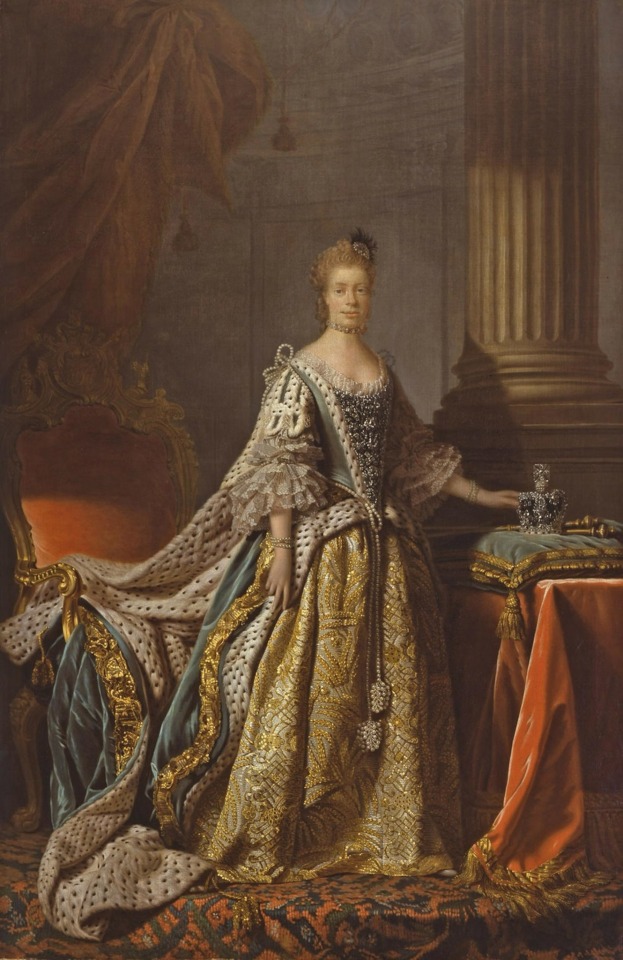
Scottish Painter Allan Ramsay's Portrait of Queen Charlotte in her Coronation Robes has inspired debate over whether she was Britain's First Black Queen—a question that persists today, centuries after she ruled over Great Britain and Ireland. Image Via Art Collection /Alamy Stock Photo
When 17-year-old Sophia Charlotte of Mecklenburg-Strelitz caught her first glimpse of the London palace that was to be her home in 1761, she turned pale. She was set to become Queen of Great Britain and Ireland within hours, but she had never set foot in England or met her husband-to-be.
What happened next is the stuff of royal history—and the subject of Queen Charlotte: A Bridgerton Story. The new Netflix limited series fictionalizes the life of the timid German girl destined to rule England—and who is rumored to have been its first Black queen. But who was the real Queen Charlotte?
How Charlotte Became Queen of Great Britain

Just beneath this Oval Portrait of Charlotte of Mecklenburg-Strelitz, you'll see the Initials of the Royal Couple: G for George III and C for Charlotte. Despite the Queen's initial timidity, historians say that the Monarch by all accounts had a Happy Marriage. Image By Johann Esaias Nilson Via BTEU/RKMLGE/Almay Stock Photo
Born in 1744 in Mecklenburg-Strelitz, a duchy in what is now Northern Germany, the princess had an unremarkable childhood in what other members of the European aristocracy considered to be a mediocre and provincial dukedom. But this would work in the young woman’s favor when a far-off prince became king.
In 1760, George III’s grandfather died, making him King of England—and making his unmarried status a matter of national alarm. George needed a wife, and he needed one fast, his advisers decided—and they mounted a desperate search for a Protestant princess to share his life and sire an heir.
Charlotte was unknown and thought to have no political connections or aims. This was seen as a plus by George’s political advisers, who wanted British interests to prevail after the king’s marriage. And so, though George had never met Charlotte, in 1761 an emissary proposed marriage on his behalf. Charlotte accepted, and the arranged marriage took place just six hours after the young princess arrived in England.
Though she spoke no English and had never met her husband before her wedding day, Charlotte was now Queen of Great Britain and Ireland. Everyone wanted to greet the new king and queen: At their coronation, so many well-wishers crowded them that it took two hours to for their procession to make it from the street into Westminster Abbey. Soon, Charlotte had her first child, a daughter. She would go on to bear 15 children during her long marriage.
Were Queen Charlotte and King George in Love?
By all reports, the king and queen had an unusually happy marriage, and George III was a devoted father and husband. But court life was difficult for Charlotte, who clashed with her mother-in-law over the formal rules of the British aristocracy and found the expectation to bear plenty of heirs exhausting. By the time she had borne 14 of her 15 children, she wrote that “I don’t think a prisoner could wish more ardently for his liberty than I wish to be rid of my burden.”
Though Charlotte struggled with the boredom and confinement of court life, she found her own ways to deal with the crushing expectations of her new role. The year after her marriage, George bought her a large country estate owned by the Dukes of Buckingham. Buckingham House, now known as Buckingham Palace, was called the “Queen’s House,” and there she lived in comfortable domesticity, reading, doing needlework, and playing the harpsichord.
She shared a love of botany and plants with her husband, who became known as “Farmer George” due to his agricultural interests.
The 'Madness' of King George
But the couple’s happiness did not last. In 1765, George experienced a bout of mental illness so serious that his ministers proposed having Charlotte temporarily take the throne while the king was incapacitated.
Though the king soon recovered, he experienced relapse after relapse, and eventually it became clear his mental illness would not pass. The king experienced mania, depression, hallucinations, and convulsions, and historians report that he attacked and even sexually assaulted members of his family.
These bouts of illness devastated the queen. “The queen is almost overpowered with some secret terror,” wrote Francis Burney, one of Charlotte’s attendants, in 1788. “I am affected beyond all expression in her presence, to see what struggles she makes to support serenity.” Over time, the bouts turned into lengthy episodes, and the king was isolated and even incarcerated.
Social stigma and lack of understanding of mental illness meant it was nearly impossible to help the “mad” king or gain the kind of support now regarded as key for the caretakers and loved ones of people with mental illness.
Eventually, Charlotte’s son George (later George IV) took over the throne as regent. But her husband would remain ill for the rest of his life, and by 1789 the queen’s hair had “turned white under the stress of the King’s illness.” When Charlotte died in 1818, her husband was so ill he did not understand his wife was dead.
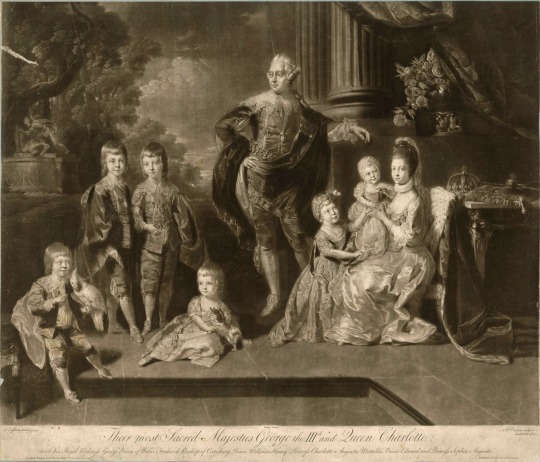
George III and Queen Charlotte Pose with their Children. The Queen gave birth to 15 children—a responsibility of her position that she found particularly exhausting. Image By Richard Earlom, Via National Museums in Berlin, Art Library/Anna Russ
Was Charlotte Teally Britain’s First Black Queen?
Today, Charlotte is remembered as a faithful wife and a tragic figure connected with the king’s mental illness. But some see her as noteworthy for another reason—they claim she was Great Britain’s First Black or Biracial Queen. For decades, historians have debated whether Charlotte’s Ancestral Ties to Portuguese Aristocracy Mean She had Brown Skin.
Those who believe she had Black ancestry point to portraits that show what they describe as “African” features and say other depictions of the time that show the queen as light-skinned would have been hiding her ancestry to conform with the era’s Eurocentric beauty ideals. But others say the queen’s ancestry was so distant it likely did not affect her looks, and argue that modern conceptions of race are what’s driving the belief that Charlotte was black.
Since it’s impossible to determine how Charlotte really looked in real life, the argument will likely never be settled. Nor will public interest in Charlotte’s life, as evidenced by the new Netflix limited-run series—which has gained fans, charmed reviewers, and drawn newfound attention to the tragic queen’s life. But as narrator Julie Andrews says in the show itself, “It is fiction inspired by fact.”
#Britain 🇬🇧#First Black Queen#Story#Queen Charlotte#History#Historians#Great Britain 🇬🇧 | Ireland 🇮🇪#Britain's First Black Queen Charlotte#King George#Ancestry#Ancestral#Portugal 🇵🇹#Portuguese 🇵🇹
2 notes
·
View notes
Text
“Queen Charlotte”: A Review
::there may be spoilers::

Description:
We are one crown. His weight is mine, and mine is his…”
In 1761, on a sunny day in September, a King and Queen met for the very first time. They were married within hours.
Born a German Princess, Charlotte of Mecklenburg-Strelitz was beautiful, headstrong, and fiercely intelligent… not precisely the attributes the British Court had been seeking in a spouse for the young King George III. But her fire and independence were exactly what she needed, because George had secrets… secrets with the potential to shake the very foundations of the monarchy.
Thrust into her new role as a royal, Charlotte must learn to navigate the intricate politics of the court… all the while guarding her heart, because she is falling in love with the King, even as he pushes her away. Above all she must learn to rule, and to understand that she has been given the power to remake society. She must fight—for herself, for her husband, and for all her new subjects who look to her for guidance and grace. For she will never be just Charlotte again. She must instead fulfill her destiny… as Queen.

Author Bio:
#1 New York Times bestselling author JULIA QUINN began writing one month after graduating from college and, aside from a brief stint in medical school, she has been tapping away at her keyboard ever since. Her novels have been translated into 43 languages and are beloved the world over. A graduate of Harvard and Radcliffe Colleges, she lives with her family in the Pacific Northwest.
Look for BRIDGERTON, based on her popular series of novels about the Bridgerton family, on Netflix.
My Thoughts:
I recently won a copy of “Queen Charlotte,” from a Goodreads Giveaway, in return I’m giving an honest review. This book is a tv series tie-in; I haven’t watched the series (I haven’t watched any of the Bridgerton Series, though I have read five of the books) so I can’t comment on it. I can only offer my thoughts and feelings on the novel. Another thing I want to point out, and the author pointed this out too, this book is a work of fiction loosely inspired by a true story. Also, the whole Bridgerton Series – books and show – are a kind of fairytale au of the Regency era. The same could probably be said about “Queen Charlotte.”
Now, with all that in mind – the work of fiction inspired by a true story and the fairytale au of the era – I was able to go into it with an open mind. I only knew two things about King George III – that he was the king during the American Revolution and that during his reign, he went mad and his son ruled in place of him. I knew nothing of Queen Charlotte.
We’re introduced to both George and Charlotte on their wedding day; it’s an arranged marriage and they don’t meet until right before ceremony. They have a meet cute, sparks fly, and though there are challenges, you have a feeling of how it’s going to play out. But I was okay with that, the whole story worked for me as a romance. It’s a bodice ripper, so if you prefer clean fiction, or a faithful depiction of King George III and Queen Charlotte’s lives, this might not be for you.
I loved the king and queen’s relationship. They have chemistry, they complemented one another, and they truly lived out the vows they made. In this novel and in the Bridgerton universe, Queen Charlotte is a woman of color. It’s debated whether the historical figure was or not. From the portraits that exist of the queen, she could have been (I personally think she was). History is often whitewashed. King George III’s mental illness is depicted and it is heart wrenching to read how the mentally ill were viewed and treated. The treatments given in that era were basically torture. The novel doesn’t lie – true love doesn’t cure mental illness. The best that could be done in the 18th and 19th centuries is offer unconditional love and understanding. I think that’s what I liked best about “Queen Charlotte.” It doesn’t sugarcoat; it shows how an 18th century couple might cope with an arranged marriage, racism, and mental illness.
If you like the Bridgerton books or the tv series, you’ll probably like “Queen Charlotte.” I, for one, preferred this book to the others I read.
3 notes
·
View notes
Text
CHARLOTTE OF MECKLENBURG-STRELITZ // QUEEN OF GREAT BRITAIN & IRELAND
“She was Queen of Great Britain and Ireland as the wife of King George III from their marriage on 8 September 1761 until her death in 1818. The Acts of Union 1800 unified Great Britain and Ireland into the United Kingdom of Great Britain and Ireland. As George's wife, she was also Electress of Hanover until becoming Queen of Hanover on 12 October 1814. Charlotte was Britain's longest-serving queen consort, serving for 57 years and 70 days. Charlotte was a patron of the arts and an amateur botanist who helped expand Kew Gardens. She introduced the Christmas tree to Britain, decorating one for a Christmas party for children of Windsor in 1800. She was distressed by her husband's bouts of physical and mental illness, which became permanent in later life. She maintained a close relationship with Queen Marie Antoinette of France, and the French Revolution is likely to have enhanced the emotional strain felt by Charlotte. Her eldest son, George, was appointed prince regent in 1811 due to the increasing severity of the King's illness. Charlotte died in November 1818, with her son George at her side. George III died a little over a year later, probably unaware of his wife's death.”


0 notes
Text

Queen Charlotte
Artist: Thomas Gainsborough (British, 1727–1788)
Date: This is a replica by Gainsborough of a portrait of the queen (Royal Collection) which he painted at Windsor Castle in September 1782.
Medium: Oil on Canvas
Collection: Metropolitan Museum, New York City, NY, United States
Charlotte of Mecklenburg-Strelitz
Charlotte of Mecklenburg-Strelitz (Sophia Charlotte; 19 May 1744 – 17 November 1818) was Queen of Great Britain and Ireland as the wife of King George III from their marriage on 8 September 1761 until her death in 1818. The Acts of Union 1800 unified Great Britain and Ireland into the United Kingdom of Great Britain and Ireland. As George's wife, she was also Electress of Hanover until becoming Queen of Hanover on 12 October 1814. Charlotte was Britain's longest-serving queen consort, serving for 57 years and 70 days.
#portrait#queen charlotte#thomas gainsborough#oil on canvas#british artist#british monarch#british history#european art#female#head piece#costume#necklace#british monarchy#18th century painting
15 notes
·
View notes
Text
Events 9.22 (before 1930)
904 – The warlord Zhu Quanzhong kills Emperor Zhaozong, the penultimate emperor of the Tang dynasty, after seizing control of the imperial government. 1236 – The Samogitians defeat the Livonian Brothers of the Sword in the Battle of Saule. 1499 – The Treaty of Basel concludes the Swabian War. 1586 – The Battle of Zutphen is a Spanish victory over the English and Dutch. 1692 – The last hanging of those convicted of witchcraft in the Salem witch trials; others are all eventually released. 1711 – The first attacks of the Tuscarora War begin in present-day North Carolina. 1761 – George III and Charlotte of Mecklenburg-Strelitz are crowned King and Queen, respectively, of the Kingdom of Great Britain. 1776 – Nathan Hale is hanged for spying during the American Revolution. 1789 – The office of United States Postmaster General is established. 1789 – Battle of Rymnik: Alexander Suvorov's Russian and allied army defeats superior Ottoman Empire forces. 1792 – Primidi Vendémiaire of year one of the French Republican Calendar as the French First Republic comes into being. 1823 – Joseph Smith claims to have found the golden plates after being directed by God through the Angel Moroni to the place where they were buried. 1857 – The Russian warship Lefort capsizes and sinks during a storm in the Gulf of Finland, killing all 826 aboard. 1862 – A preliminary version of the Emancipation Proclamation is released by Abraham Lincoln. 1866 – The Battle of Curupayty is Paraguay's only significant victory in the Paraguayan War. 1885 – Lord Randolph Churchill makes a speech in Ulster in opposition to the Irish Home Rule movement. 1891 – The first hydropower plant of Finland is commissioned along the Tammerkoski rapids in Tampere, Pirkanmaa. 1892 – A locomotive shunting falls into a hole in the ground, leading to the burial of the locomotive. 1896 – Queen Victoria surpasses her grandfather King George III as the longest reigning monarch in British history. 1910 – The Duke of York's Picture House opens in Brighton, now the oldest continually operating cinema in Britain. 1914 – A German submarine sinks three British cruisers over a seventy-minute period, killing almost 1,500 sailors. 1919 – The steel strike of 1919, led by the Amalgamated Association of Iron and Steel Workers, begins in Pennsylvania before spreading across the United States.
0 notes